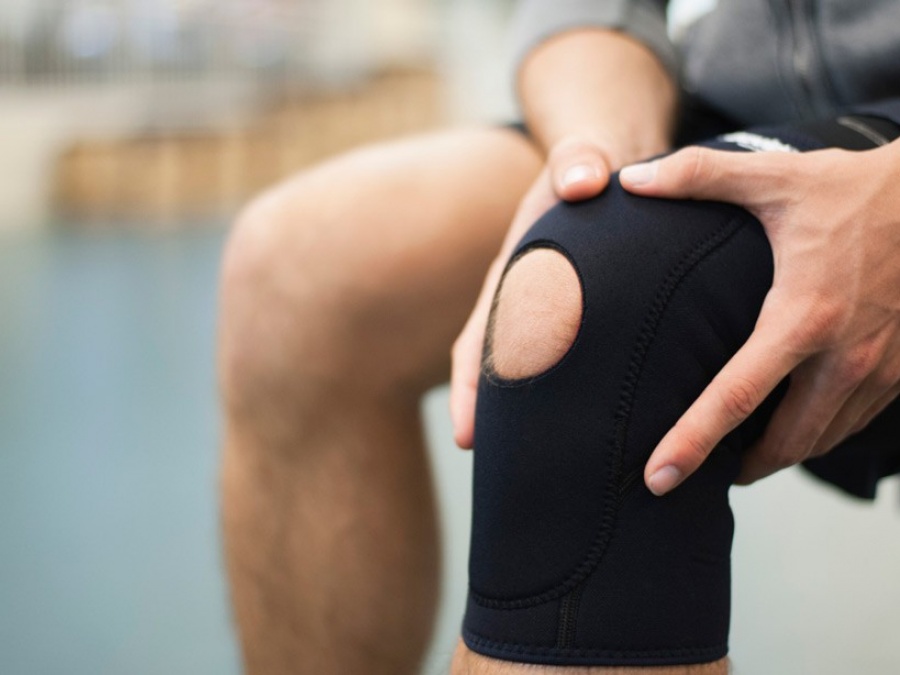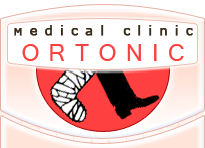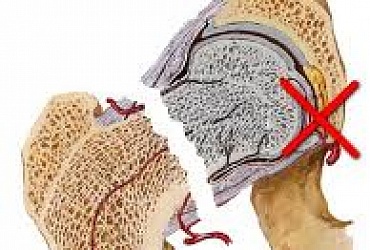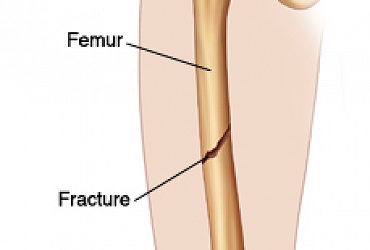Injury of knee joint meniscus

Rupture of Meniscus
Meniscus ruptures are the most frequent of knee joint injuries - up to 75% of all closed knee joint injuries. More often this trauma occurs in men. Menisci of the knee joint are cartilaginous pads that act as shock absorbers in the joint, and also stabilize the knee joint. When moving in the knee joint, the menisci are compressed, their shape changes.
Meniscus knee joint two:
- external (lateral)
- internal (medial).
In front of the joint they are connected by a transverse ligament.
The outer meniscus is more mobile than the inner one, so its traumatic injuries occur less frequently.
The inner meniscus is less mobile and is connected to the inner lateral ligament of the knee joint, which often causes its associated with a bunch of lesions.
On the side of the joint, the menisci are spliced with the capsule of the joint and have a blood supply from the arteries of the capsule. The internal parts are in the depth of the joint and have no blood supply, and the nutrition of their tissues is due to the circulation of the intra-articular fluid. Therefore, meniscus lesions near the joint capsule coalesce well, and ruptures of the inner part, at the back of the knee joint, do not grow together at all. Meniscus lesions occur with sharp movements of the tibia with a turn in the knee joint, but with a fixed foot. Less often meniscus ruptures occur when squatting, when jumping. Often the trauma that caused the meniscus rupture can be minor.
There is a separation of menisci from the place of attachment to the capsule of the joint and rupture of the body of the meniscus. When the meniscus ruptures, the torn part remains connected with the meniscus's body. Such a break is called a meniscus rupture by the type of "handle of a watering can". More often there are meniscus tears and combined injuries.
Traumatic injuries of meniscus can be combined with other injuries of the structures of the knee joint: lateral and cruciate ligament, joint capsule. The severed part of the meniscus, connected with the body of the meniscus, can move into the joint cavity and is impaired between the joint surfaces of the femur and tibia. There is a blockade of the joint, manifested by sudden sharp pain and restriction of movement in the joint. Especially often this blockade occurs when the internal meniscus ruptures like the "handle of a watering can".
Diagnostics:
The patient complains of severe pain, violation of movements in the knee joint. Sometimes a meniscus rupture is accompanied by bleeding to the knee joint (hemarthrosis), but more often there is a reactive inflammation of the inner shell of the joint - synovitis. The patient keeps the leg in a bent state, because the pain increases with extension, especially if the joint has been blocked. At palpation, a pain is found in the projection of the damaged meniscus, sometimes an elastic roller is probed, which rolls over the outer surface of the joint gap when it is unbent in the joint. This symptom is called a click or roll symptom.
To exclude damage to bone structures, X-rays are taken. The meniscus tears in the pictures are not visible, since the menisci are transparent to X-rays. Completely establish the diagnosis help X-rays with contrasting joint, ultrasound, but more modern methods are magnetic resonance imaging or endoscopic arthroscopy (examination of the inner surface of the joint with an arthroscope).

|

|
| Full rupture of the posterior horn of the medial meniscus. Ultrasound | Full rupture of the posterior horn of the medial meniscus. MRI |
As an initial aid, anesthesia is carried out, the tire is applied and the patient is transported to the trauma hospital.
Treatment of meniscus lesions:
A joint puncture is performed with the administration of a solution of novocaine. Then, the restrained meniscus is adjusted with special techniques in the position of the patient lying on the orthopedic table. At the same time, trauma surgeons make reverse movements, movements that lead to trauma. When the meniscus becomes in its place, movements in the joint are restored. After restoring the meniscus, a plaster bandage is applied to the injured leg, with the knee joint bent at a certain angle.
The period of immobilization is 3 weeks, after which physiotherapy and physiotherapy are prescribed. If a patient has repeated blockages of the joint, this condition is called chronic meniscus damage. In this case, usually there is inflammation of the inner shell of the joint - synovitis, there is a constant pain in the joint, increasing with walking, especially when descending the stairs. Sometimes there is a "joint mouse".
The articular mouse is a free body in the joint cavity, which is formed due to the detachment of a piece of articular cartilage, a part of the meniscus, a marginal osteophyte (bone growth). This condition leads to frequent blockade of the joint and the "articulate mouse" must be surgically removed.
In case of traumatic meniscus lesions, if the blockade of the joint can not be eliminated, joint blockades occur frequently, the patient is constantly concerned about joint pain, difficulties arise when walking requires surgical treatment. To date, the best way is considered arthroscopic surgery. With the help of endoscopic technique, first examine the inner surface of the joint, decide the scope of the operation. Then the damaged meniscus is removed. After surgery, a tight bandage or gypsum lingeta is applied to the leg. An important condition for recovery is the early practice of therapeutic gymnastics.




